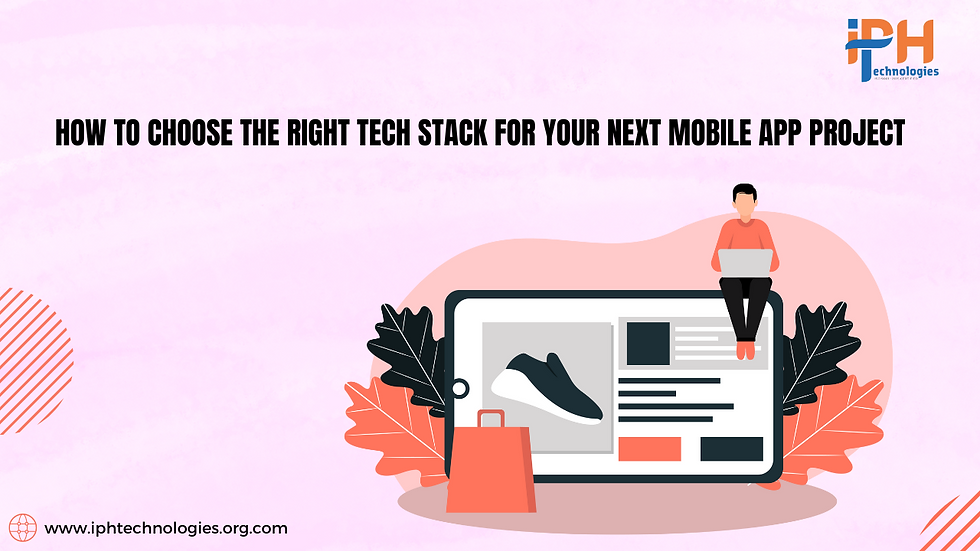How to Choose the Right Tech Stack for Your Next Mobile App Project
- seoiphtechnologies
- Mar 8, 2024
- 3 min read

In today’s rapidly evolving digital landscape, creating a successful mobile app requires more than just a great idea — it also demands the selection of the right technologies to bring that idea to life. With a multitude of options available, from frameworks to programming languages, deciding on the perfect tech stack for your next mobile app project can be a daunting task.
Whether you’re diving into Android app development, iOS app development, or even Mac app development, making informed choices at the outset is crucial for the success of your endeavor.
Understanding Your Project Requirements
Before delving into the specifics of different tech stacks, it’s essential to understand the unique requirements of your mobile app project. Consider factors such as:
Functionality: What features will your app offer? Will it require complex interactions or real-time updates?
Scalability: Do you anticipate rapid growth in users or content? Will your app need to handle increasing loads over time?
Performance: Are there any performance-critical tasks or processes within your app?
Platform Compatibility: Will your app need to run on Android, iOS, or both? Are you considering Mac app development as well?
Budget and Time Constraints: What are your budgetary limitations and project timelines?
Evaluating Tech Stack Options
Once you’ve identified your project requirements, it’s time to explore the various components of a tech stack that will best suit your needs. Here are some key considerations for each aspect of app development:
Programming Languages:
Android App Development: Java and Kotlin are the primary languages for Android development. Kotlin, being more modern and concise, is gaining popularity rapidly.
iOS App Development: Swift is the preferred language for iOS development due to its speed, safety features, and ease of learning.
Mac App Development: Swift is also the language of choice for macOS development, providing a consistent experience across Apple’s ecosystem.
Frameworks and Tools:
Cross-Platform Development: If you’re targeting multiple platforms simultaneously, frameworks like React Native or Flutter offer the advantage of writing code once and deploying it across different platforms.
Native Development: For maximum performance and platform-specific features, native development using Android Studio (for Android) or Xcode (for iOS and macOS) provides unparalleled control and optimization.
Database and Backend Services:
Consider the scalability, reliability, and ease of integration with your chosen tech stack when selecting database and backend services. Options include Firebase, AWS, MongoDB, and SQLite.
Balancing Trade-offs
When choosing a tech stack, it’s essential to weigh the trade-offs between factors such as development speed, performance, maintainability, and platform support. For example:
Cross-platform frameworks offer faster development times but may sacrifice some platform-specific performance optimizations.
Native development provides maximum performance and platform integration but may require separate codebases for each platform.
Conclusion
Choosing the right tech stack for your next mobile app project is a critical decision that will impact the success and longevity of your app. By carefully considering your project requirements, evaluating different programming languages, frameworks, and tools, and balancing trade-offs between development speed and performance, you can make informed choices that set your app up for success in the competitive mobile landscape.
Remember, the key is not to chase the latest trends blindly but to select technologies that best align with your project goals and long-term vision. With the right tech stack in place, you’ll be well-equipped to create a compelling, high-quality mobile app that delights users on Android, iOS, or even macOS devices.











Comments